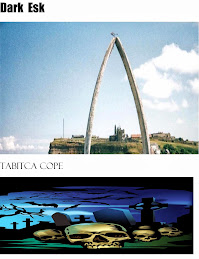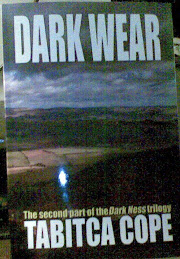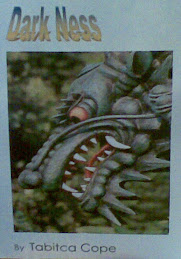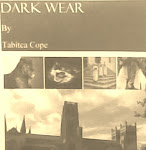Monday 28 November 2011
for info
you may have noticed that some old blogs have been reposted and not many news items have appeared. I am not at all well at the moment so postings may be a bit sporadic. I shall endeavour to keep the blog up to date with any news I come across but you may want to read other blogs that might be more in advance with the news at the moment. There is a list of blogs I follow at the side of the page so take a look if you get bored with my lack of activity. Life is a real struggle for me at the moment and some days even sitting down at the computer to type things is too much. I hope this will pass and I will get a remission so keep checking back please for new stuff appearing . Thanks to everyone for your patience. I feel privileged so many people read and follow the blog.
Taniwha ,any truth in the stories?
Taniwha , mythical beings or based in reality?
In Maori mythology, taniwha are beings that live in deep pools in rivers, dark caves, or in the sea, especially in places where there are dangerous currents. Taniwha appear in many forms. In the ocean they can be seen as whales and sharks or great monsters with razor sharp spines and fish scales. In some traditions they are seen as dangerous, predatory beings, who kidnap women to have as wives and eat humans. Others were kaitiaki, or protectors of the Maori peoples. These ones were respected, and people who passed by their habitats would leave an offering.
There are many traditional stories:
Te Tau-a-Porirua was a taniwha from Heretaunga , said to live on the Ruataniwha plains. A chief named Tara was responsible for capturing this taniwha, which had killed many people. Tara made a giant eel pot, put in 200 dogs as bait and set the pot in the Roto-a-Tara lake. Lured by the dogs, the taniwha entered the trap. Tara then dragged the creature ashore and killed it. When it was cut open, more than 200 victims were found inside. They were buried, and the taniwha was eaten by Tara and his people.
However some stories were more recent:
In the 1870s, Mohi Tūrei, an elder of Ngāti Porou, sent a letter in to the Māori language newspaper Te Waka Maori o Niu Tirani. He described the case of a girl who was said to have been killed by a taniwha.
On 20 December 1876, four girls were swimming in a waterhole at Waipapa. This spot was said to be the home of a taniwha named Tāminamina. While three of the girls began to bathe, the fourth, Mereana, swam to the other side of the waterhole, climbed out onto the rocks, and began sucking nectar from the red flowers of the sacred rātā tree. Suddenly, she slipped back into the water. Her friend Rāhera tried to grab her, but failed. The two other girls screamed, because they saw the water whirling near where she had fallen, and knew it to be the taniwha named Tāminamina who had got their friend.Rāhera dived to find her, but could not. Rāhera swam to shallow waters and then saw the water was rising into waves. Days later Mereana was found, back on the rock where she had slipped. But when a group came to get her body, she had once again disappeared. An elder believed she had been taken by the taniwha as punishment for sucking the flowers of the sacred rātā tree. The belief in these creatures is so real that in 2002, Ngāti Naho, a Māori tribe from the Meremere district, successfully ensured that part of the country's major highway, State Highway 1, be re-routed in order to protect the abode of their legendary protector. This taniwha was said to have the appearance of large white eel, and Ngāti Naho argued that it must not be removed but rather move on of its own accord; to remove the taniwha would be to invite trouble. Newspaper article from 2002:
http://www.nzherald.co.nz/nz/news/article.cfm?c_id=1&objectid=3003282
So real are these creatures in some people’s minds that an American TV crew went searching for them.(I think it may have been Josh Gates but as I am in UK perhaps someone from the USA may know).It is possible that there were or possibly still are real creatures living in deep pools etc that are called taniwha but are known creatures such as large eels or large fish. It is certainly a wonderful tradition and begs the question did large unknown(to us) creatures once exist that the Maori recognised and called taniwha.
Taniwha, Giants, and Supernatural Creatures =: He Taniwha, He Tipua, He Patupaiarehe
The Dragon and the Taniwha: Maori and Chinese in New Zealand
Saturday 26 November 2011
diary from the deep
25 November 2011
Seamounts and coral: a conservation diary from the deep
A team of scientists has set out on a six-week mission, funded by the Natural Environment Research Council, to explore the Indian Ocean's underwater mountains, or seamounts. The scientists aboard the research vessel, the RRS James Cook, will study life thousands of metres below the surface. In the second of her BBC Nature diary entries, Aurelie Spadone from the International Union for the Conservation of Nature, who is part of the team, explains what makes seamount habitats unique.
Extract: Some of the animals that live in these strange habitats live without light and with pressures of up to 50kg per square centimetre on their bodies.The isolation of seamounts also makes them very special. We could compare seamount habitats in the oceans to oases in deserts in terms of relative richness of life there. Life finds a way in improbable places.I think we have a responsibility to protect this improbable life and make sure we don't eradicate it before we have even had the chance to discover it properly.
Read rest an follow diary here: http://www.bbc.co.uk/nature/15872414
Friday 25 November 2011
What was Turkey Hollow Varmint.?
The strange Tale of the Turkey Hollow Varmint.
A 7-foot-long predatory cryptid from the Brushy Mountains killed a hunting dog and pursued local residents in Turkey Hollow, Wilkes County, North Carolina in November 1944, according to the North Carolina journalist John Harden . He chronicled the story in his book :
“The Devil's Tramping Ground and Other North Carolina Mystery Stories”
(Chapel Hill, NC: University of North Carolina Press, 1949, 1980). ( chapter on "The Strange Killer of Turkey Hollow" pp. 147-154).
The story is as follows:
One cold November day in 1944, Slim Davis and his friend Code Frazier set out deer hunting near Moravian Falls and Pores Knob, with Code's 50-pound black hound Jule. As they followed a narrow wagon road up Turkey Hollow, Code showed Slim some scars on Jule's leg and ears, made some time earlier by an unknown assailant. She had a long ragged scar on her leg from shoulder to knee, and her ears had been slit in a dozen places, either by a fang or a claw. "I don't know what done that," Code told Slim, "but whatever it was, it's the only thing that ever whipped Jule." A dog hadn't given Jule these wounds, he added. "Whatever done that whipped every dog in the country--and Jule twice." Code said that he had been working in an apple orchard near that very spot in Turkey Hollow when Jule first jumped it. He had found poor Jule limping home an hour later, bloody, severely hurt, from her encounter with the "varmint."As Slim and Code were talking that morning, Jule suddenly ran off--and then a thin whine sounded down on the slope below them, followed by a long drawn out baying, as they approached a cliff called the Devil's Smokehouse. Then they heard Jule yelping in a frenzy of excitement. They heard Jule running and yelping in pursuit of what they thought must be a fox toward Snaggy Mountain and the Devil's Smokehouse. Code's grim voice then snapped them back to reality. "That's no fox, either," he said. "That's the varmint she's after again." A few minutes later, Slim and Code stood just below the Devil's Smokehouse rocks, a 50-foot cliff running a quarter of a mile east and west, across the rim of Turkey Hollow. Then Jule's hunting sound reached its highest peak--and abruptly ended. Slim and Code looked for Jule, but never found her. Code's dog was never seen again that November day in 1944. Arthur Edsel, Raymond and Willard Lane, Galen Hood, and Reid Anderson helped in the search for days. They covered the whole area by foot, inch by inch, but never found a trace of Jule.
Did they ever find out what the "varmint" was?, Harden asked.
“No, but there was a story of how it chased the Lane boys out of Turkey Hollow the next night after Jule disappeared. Then Reid Anderson said that it jumped into the road in front of him as he was coming through the adjoining Shandy Hollow two nights later. Reid said it looked like it was seven feet long. He took a few shots at it with his .38 but seemed to have missed. After that the varmint retired, as far as anyone knows.” (p. 154)
There was no further description of what the creature looked like but Harden thought it might have been a "panther".
One interesting thing in the text is that it says "Whatever done that whipped every dog in the country--and Jule twice.". This implies that other dogs had been attacked and Jule wasn’t the only dog to be injured. There are no further details and Harden did not seem to have interviewed any other residents. Could it have been a Big Cat? Sounds most likely. North Carolina certainly seems to be the place for lots of strange cryptid sightings!
Thursday 24 November 2011
Happy Birthday Nick
A very happy birthday to Nick Redfern, cryptozoologist and thoroughly nice chap.:-)
http://monsterusa.blogspot.com/
http://monsterusa.blogspot.com/
Wednesday 23 November 2011
another "extinct" creature discovered still living.
'Extinct' giant sponges, once used as bath tubs, are rediscovered
The giant Neptune's Cup sponge, last seen in 1908, was believed extinct until divers recently spotted one off the coast of Singapore.
By Bryan Nelson Tue, Nov 22 2011
It's the sponge that takes the idea of a sponge bath to a whole new level: the giant Neptune's Cup. First discovered in 1822, these sponges once grew so large that they were commonly used as bath tubs for children. However, that handy use quickly led to overharvesting, and the last time anyone saw one alive was in 1908. Many believed the sponges had become extinct.
That was until March of this year, when biologists doing a routine survey dive along Singapore's coast spotted something that none of them could immediately identify. Of course they couldn't: a living Neptune's Cup sponge hadn't been spied for more than 100 years.
But there it was — two of them, in fact, just 50 meters from one another. Sponge expert Lim Swee Cheng, author of the book "A Guide to Sponges of Singapore," was called in to confirm the finding, according to a report by Scientific American.
"My heart skipped a beat when I saw it in Singapore waters this year," Lim recently wrote on his Facebook page, after positively identifying the sponges as Neptune's Cups.
With diameters measuring 30 centimeters across, the pair of newly discovered sponges are tiny compared to legend, which described heights of more than a meter and diameters wide enough to hold a bathing human. These new discoveries are just babies, say scientists — but they are growing fast. And their presence may indicate that a more stable population exists nearby.
Sunday 20 November 2011
Two aquatic mysteries for Sunday
Military 'can't rule out' sighting was foreign sub
Published: 17 Nov 11 17:07 CET
Extract:
The Swedish Armed Forces said Thursday that it can't rule out the possibility that a submarine from a foreign power was behind suspicious activity detected in the Gothenburg archipelago in September. Ships from Sweden's 3rd Naval Warfare Flotilla, based in Karlskrona, as well as the 4th Naval Warfare Flotilla, and the Amphibious Regiment from Berga outside of Stockholm were deployed to the area following reports of suspicious activity thought to be submarine possibly spying on Sweden.
A few days following the incident, Thörnqvist said he couldn't rule the activity as being caused by a submarine intrusion or “a fish of some kind”.
A few days following the incident, Thörnqvist said he couldn't rule the activity as being caused by a submarine intrusion or “a fish of some kind”.
Read rest here : http://www.thelocal.se/37418/20111117/#
Could it have been a large fish or a cryptid? How many times have we heard about sea or lake monsters looking like submarines, a long neck like a periscope?
Whales in the desert: Fossil bonanza poses mystery
By EVA VERGARA and IAN JAMES Associated Press
SANTIAGO, CHILE (AP) - More than 2 million years ago, scores of whales congregating off the Pacific Coast of South America mysteriously met their end. Maybe they became disoriented and beached themselves. Maybe they were trapped in a lagoon by a landslide or a storm. Maybe they died there over a period of a few millennia. But somehow, they ended up right next to one another, many just meters (yards) apart, entombed as the shallow sea floor was driven upward by geological forces and transformed into the driest place on the planet. Today, they have emerged again atop a desert hill more than a kilometer (half a mile) from the surf, where researchers have begun to unearth one of the world’s best-preserved graveyards of prehistoric whales. Chilean scientists together with researchers from the Smithsonian Institution are studying how these whales, many of the them the size of buses, wound up in the same corner of the Atacama Desert.“That’s the top question,” said Mario Suarez, director of the Paleontological Museum in the nearby town of Caldera, about 700 kilometers (440 miles) north of Santiago, the Chilean capital.Friday 18 November 2011
another big cat spotted in Scotland
Big cat sighting near Forres
Tanya McLaren
A FORRES woman got the shock of her life after spotting a large black cat bounding down the side of a field as she was passing in her car. Alannah Reaper was on the way back from tending to her horses when she spied the creature, as she was driving past a large open field, just before 5pm last Wednesday night. She was driving about half a mile as the crow flies from the village of Dyke, heading in the direction of A96, approaching the old A96 road.“We got to the last farm at the Banrach,” she said. “I had to pull over to let a car and tractor pass, and while we were sitting in the car waiting for the on coming traffic to pass, next to a large stubble field on my left, I clocked the cat at the side, trotting briskly up the field heading in the direction behind me.” She said the creature went the last few yards and then “bounded” towards the woodlands.“It was clearly visible thanks to the full moon,” she said. “As I was watching it go across the field, I tried to turn the car to shine my headlights on the field to make it more visible for my mum to see, who was sitting in the passenger side, unfortunately it was long gone.” Alannah said that it was the size of good sized dog, but a lot longer and had a distinctive movement not like any dog or deer, and far bigger than the domestic cat.Her sighting is about a mile from where local woman, Jan Munro from Knockomie Rise saw the creature with her friend, Jo Greenwood about two years ago.
Have you seen the cat? Email newdesk@forres-gazette.co.uk.
Full story in this weeks edition: http://www.forres-gazette.co.uk/News/Big-cat-sighting-near-Forres-15112011.htm
Subscribe to:
Posts (Atom)




















